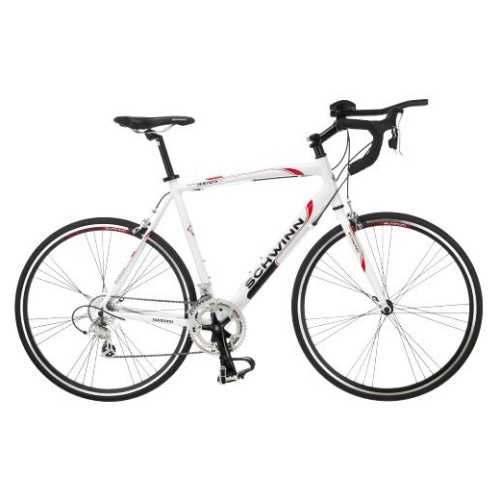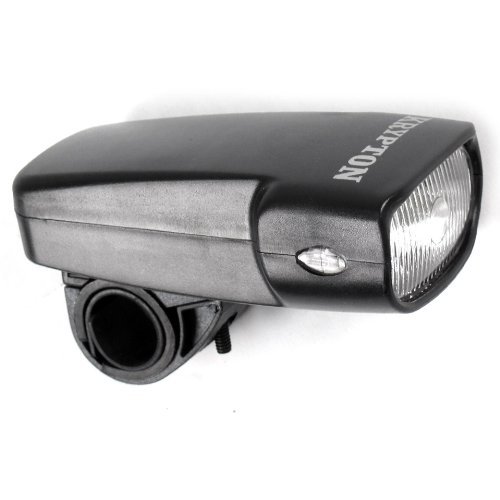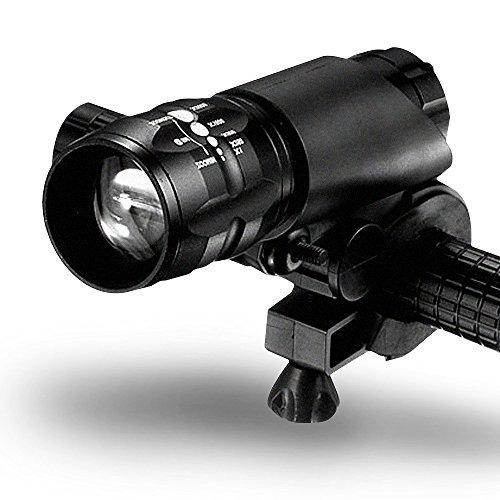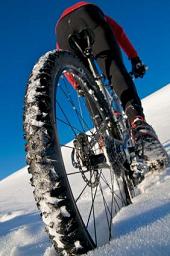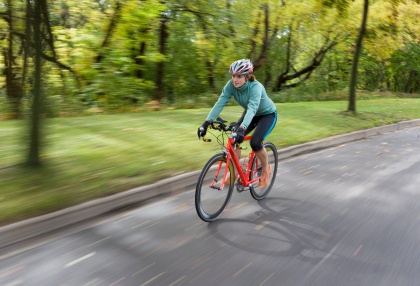
The sun is rising in the distance, and the landscape at your side becomes a hypnotic blur as you set out on your road biking journey.
The stress of the work week seems to fade behind you, as if you left it in a pile under the last cluster of trees you passed. Your mind clears, and all that consumes your thoughts is how crisp the morning air is, as the pavement pulls your tires forward like a magnetic force.
Pavement is one thing there is no shortage of. Whether you prefer the excitement of the city or the calmness of the country, you will never have a hard time finding the backdrop of your choice. Enjoy a quiet ride through rolling green hills one day and ocean views on the road paralleling the coast the next. The possibilities are endless. For many, there is nothing in the world quite like road biking.
Road Biking Begins
Created for maximum speed and competitive racing, road racing bicycles tend to be more lightweight than any other style of bike. They are also one of the oldest varieties. It is suggested that the earliest models were first put to the test on May 31, 1868, in a road biking 1.2-kilometer race at the Parc de Saint-Cloud in Paris, France.
An Englishman by the name of James Moore took the race on a wooden bike with iron tires. By 1896, bicycling had become so popular it was introduced to the Olympic Games in Athens, Greece.
Compared to other types of bicycles, some consider road bikes to be less comfortable. However, their design and weight makes them perfect for long distance rides. On these bikes, the rider’s weight is distributed towards the front to create a more aerodynamic riding position.
Plus, the tire pressure is two times less than what you find in mountain bikes. Rolling resistance is reduced due to the decreased tire pressure, and optimal speed can be achieved because of the rider’s aerodynamic position.
Where Should You Ride?
Due to the narrow profile and high pressure of the tires, road bikes are best used on paved surfaces. From blissful beach cruises to climbs over majestic mountains, inspiring road biking routes can be found around the world.
Inner city rides can be engaging, but most will agree that the most enjoyed journeys are found beyond city limits. Nothing can compare to accidently stumbling upon a country road you have never been on, and discovering that it coils through unfamiliar farmlands and enchanted forests. This type of experience is not one you can be blessed with sitting behind your computer or watching TV.
Bike Variations
Did you know…?
Did you know that special features are available for road bicycles to make the rider more comfortable?
With an endless supply of exciting routes for lengthy road biking trips, you will appreciate that many road bikes feature seats with deep central recesses or grooves. These relieve pressure from the base of the spine and genitals. Be sure to consider this feature when you buy your road bike.
Similar to mountain bikes, modifications are done on road bikes to make them better suited for casual rides in the city.
Single speed bikes, often referred to as “fixed gear bikes,” are a great example of this type of modification. As their name implies, they have only a single gear ratio. Road bikes can also be modified for bicycle touring over significant distances.
If you enjoy a little friendly competition, you will want to find out if your city has any cycling clubs or organized races. Many areas offer criterium, trial, stage, and hill climb races inside and outside city limits.
Equipment for a More Enjoyable Ride
The more comfortable you are, the more you will enjoy your ride. When you enjoy your ride you will want to travel farther and more frequently. Since you spend a substantial amount of time in the saddle while road biking, you will want to take advantage of the available selection of specialized cycling equipment.
- Gloves – Holding onto the handle bars on a short ride may not invoke a thought about protecting your hands, but on a long ride, finger numbness and calluses are inevitable. Something as simple as padded bicycle gloves may be the determining factor in whether you take the rewarding scenic route home, or not.
- Shorts – Since you will be sitting for long periods, investing in quality spandex cycling shorts is recommended. They contain a chamois (pronounce shammy) that provides your bottom with padding you will truly appreciate. These shorts also provide a full range of motion and reduce wind resistance. Many are even made of a moisture-wicking material to keep you cool and dry by pulling moisture away from your skin.
- Jerseys – Fitted cycling jerseys are also recommended for road biking. The cut along the back accommodates the rider’s bent-over position. These are often made of moisture-wicking material, as well, and their tight fit reduces air resistance. Plus, cycling nutrition, repair tools, and spare bicycle inner tubes can be carried in the rear pockets.
- Pedals and Shoes – Special bicycle pedals, also called “clipless pedals,” and bike riding shoes are a couple more elements that will increase your comfort on the road. When the stiff sole of the cycling shoe is combined with the pedal’s locking mechanism, you literally feel like the pedal is an extension of your leg. You essentially become one with the bike. You cannot appreciate how exhilarating this is until you experience it firsthand. Additionally, this combination generates increased momentum while road biking from both upward and downward pedal strokes.
Where to Buy Road Biking Bikes?
If you are interested in buying road bicycles, you can always buy them at your local bicycle store, however there is another alternative: you can buy mountain bikes at one of these trusted online stores:
 |
 |
 |
Road Bicycles on eBay
Books about Road Biking
For more information, there are some informative books about road biking. You can find them on several online book stores. Take a Look:
 |
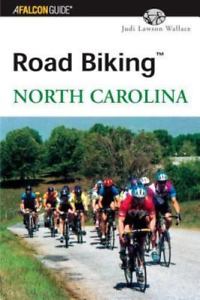 |
 |
===============================================================================================================
===============================================================================================================
===============================================================================================================
Bicycle Night Riding & Bicycle Lights
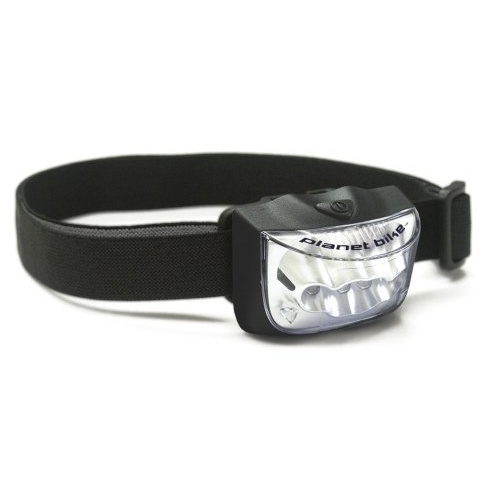 |
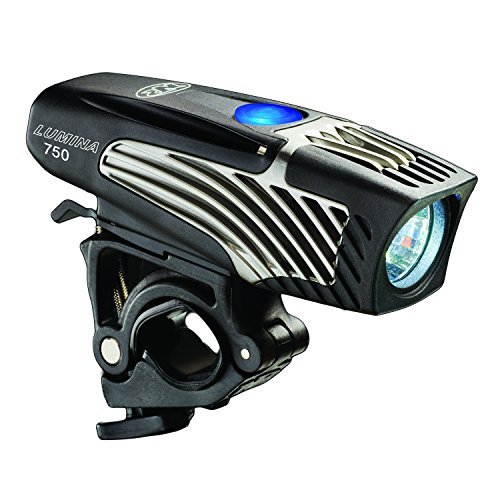 |
Lights for bicycle night riding on BikeAhead.com
The great thing about bicycle night riding is that you can ride the same trails you do during the day, but have an entirely different experience. Many people do not even think of taking their mountain bike on the trails at night. They don’t know what they are missing! Once you are charmed by the moonlight above you and the sound of the crickets around you, you’ll be hooked for good.
Sudden Popularity
Folks have been bicycle night riding for ages. However, years ago, bicycle equipment was not as advanced as it is today.
Lights were famous for dying mid-ride, which obviously poses a problem when you are in a forest.
Thanks to modern bicycle lighting technology, riders can put their trust in a halogen or LED light, and feel confident it won’t let them down. Not only are they surprisingly bright, they consume significantly less power than old varieties.
Another reason bicycle night riding has experienced an increase in popularity is due to the 24-hour rides. A good example is the Midnight Marathon that takes place annually in Boston. More than 1,000 riders from all over come out for this event, and then enjoy a pancake breakfast party after.
What is the Attraction to Bicycle Night Riding?
Biking after sundown gives you an entirely new perspective of your favorite trails.
Even those you have grown bored with during the day suddenly become exciting. Shadows make small bumps appear larger than they are, and often a little distorted, helping to sharpen your reaction time.
Riding at night lets you enjoy nighttime solitude. It is very rare that you will run into hikers on the trails. Not to mention, your chance of seeing other riders is quite low, so riding at night gives you the chance to truly escape civilization.
This activity essentially supersizes the thrill you get from a regular trail ride. Plus, just like mountain biking during the day, you get a great workout.
Tips for Selecting Your Lighting System
If you are a hardcore thrill seeker you might like to rely solely on the moonlight to illuminate your path. However, if you are like me, you want to see that tree in front of you, so you at least have the chance to react. Rest-assured, even with a light, bicycle night riding will satisfy your craving for an adrenaline rush.
There are a lot of light systems available today. It is important to become familiar with the options to make an educated decision. This guide will help.
Helmet Light vs. Handlebar Light
First, it is important to note that you don’t have to choose between the two.
The ideal light set up includes both. However, if you only want to buy one to get started, I recommend relying on one that attaches to your bicycle handlebars.
This type is commonly referred to as a “floodlight.” It illuminates the trail directly in front of you and also provides a little peripheral vision to both sides of the trail. Ideally, the one you choose should be at least 10 watts.
If you choose a helmet variety, mount it toward the center of the helmet at the top of your head. The higher you place it on the helmet, the better stability you will have. Your helmet light should be aimed about 8 feet in front of you.
Halogen or LED
Most bicycle lights are halogen or LED. They are both fantastic options, and have their unique advantages and disadvantages.
Halogen
These lights are efficient, affordable, and offer a fairly good output of bright, natural light. On the downside, the lights don’t last as long as LED varieties, and you go through batteries quite fast, if you are a frequent night rider. Using a rechargeable battery system is recommended.
LED
These lights are bright, highly efficient, and long-lasting. Most give you the option to adjust brightness, and they can be turned on and off easily. Also unlike halogen lights, LEDs die gradually be decreasing the brightness. Plus, they do not flicker. This variety does tend to be a little pricier, but they last longer and use minimal battery life.
How Much Does a Light Cost?
Lighting systems for bicycle night riding are available in an array of price ranges. Determining your budget before you start shopping will make the decision a little easier.
If you are newly being introduced to the idea of riding at night you may want to buy a $100 lighting system until you know you enjoy the activity. If you are an experienced rider you might want to invest in one of the more advanced lighting systems that run around $300.
To learn more about the lighting systems you have to choose from, visit the page of bicycle lights for all the information you need.
4 Tips for Bicycle Night Riding
Biking at night is different and exciting, but it can also be a little dangerous. These four tips will help keep you save.
- Carry a Spare Light – Relying solely on one light is not a good idea. At least if you have one on your helmet and another one on your handlebars you can use one and save the other for a backup.
- Protect Your Eyes – Like riding during the day, you want to protect your eyes with cycling sunglasses. However, the ones you wear at night are clear. They will protect your eyes against branches, dirt, and bugs.
- Never Ride Alone – I personally always have at least one person with me for bicycle night riding. If you have a group, then the path is bright from the multiple lights. Some riders can even turn their lights off to save as backup.
- Wear Long Sleeves – The last thing you want to do is put a long-sleeved shirt on in the middle of summer. Fortunately, you don’t have to. A pair of arm warmers will keep your arms warm when the temperatures dip halfway through your ride. Shivering burns more calories, which could have you hungry and out of energy before your ride is done. At least pack the arm warmers in your hydration pack, so you have them handy, in case you need them.
===============================================================================================================
===============================================================================================================
===============================================================================================================
Snow Biking and Winter Bike Riding
Crisp Air and Two Wheel Snow Surfing
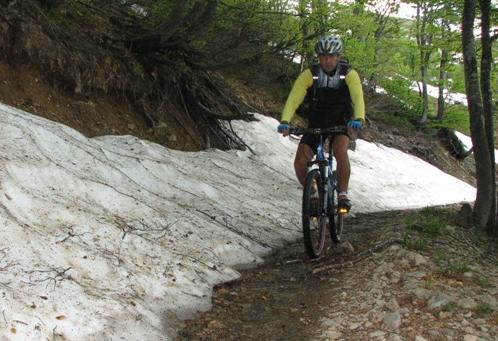
If you tell people you are going snow biking they may assume you are joking or look at you like you have gone crazy.
After all, bikes are made for paved roads and dirt trails, right? Cycling has always been associated with summer, but that does not mean the warm, sunny season owns exclusive rights to the sport.
Snow biking can be just as entertaining. Some may even argue that it is more exciting because you sort of feel like you are breaking all the rules. If you consider yourself to be a serious cyclist, then your cycling skills need to go beyond riding with no hands on the pavement or navigating a trail filled with obstacles at the park. You need to develop and perfect the skills needed to cycle in snow conditions.
Reasons to Cycle in Snow
You may be wondering if snow biking is really worth the effort. Well, not only is it quite an impressive skill to have; there are a few other reasons why this cycling skill is considered indispensable.
Convenient
- Why rely on unpredictable public transportation in the winter? In snowy conditions, your bike may be the most convenient and reliable means of transportation. It sure beats dealing with significant delays that tend to be recurring occurrences during inclement weather.
Training
- Training in the snow eliminates the decrease in performance that cyclists experience during the “off” months.
- You will maintain your technique. You may be thinking you will just use a stationary bike, but these indoor trainers are not 100 percent accurate in simulating the experience you get cycling outdoors. Therefore, when spring comes along, you have to spend valuable time finding your footing again.
Cost
Tip: Let a little air out of your tires
It is a good idea to let a little air out of your tires while cycling in the snow. Softer tires deliver better traction on slippery surfaces.
- Snow biking will save you gas money. Turning on the heater uses more gas, too.
- Riding your bike instead of driving your car will save the extra wear on your battery. Cranking a cold engine forces the starter to draw more amps from the battery. Plus, on shorter trips, the battery never really gets the chance to fully recharge, which shortens its life.
- Cost of maintenance on a bike remains consistently low, regardless of season.
Three Golden Rules of Snow Cycling
Why should skiers, snowboarders, and ice skaters have all the fun in the winter? You can have just as much fun cycling in the snow, if you have a reliable bike and proper cycling clothes. Of course, you are going to need some winter-specific riding skills, as well. The following three golden rules will have you on your way to having fun in the snow.
Stay Dry
To stay warm you have to stay dry. Your first instinct may be to just put on extra layers or wear a heavier coat, but this could do more harm than good, if you don’t choose the right fabrics.
If you are wearing a cotton base layer, it is going to stay soaked when you start sweating. This wet layer continues touching your skin throughout the ride, which is going to eventually make you incredibly cold. You need to choose moisture-wicking fabrics, especially on the base layer.
Ride on Deeper Tread
Similar to the tires on a car, the tires on your bike are going to play a leading role in snow biking. It is never a good idea to ride on bald tires, especially in the snow. You need deep tire treads to have traction on a slippery surface. Knobby, all-terrain tires are great, but studded tires are even better.
Steer with Your Hips
Steering can be the trickiest skill to perfect. In the warm months you naturally steer with your arms. However, if you move your handlebars suddenly while snow biking the probability of skidding is quite high. Use your hips and body weight to steer and guide the bike, and you will have better control.
Snow Biking in the City
You may be thinking that city biking in the winter will be no big deal because the streets get plowed. However, plowing creates other challenges. Once roads are plowed, salt usually follows to melt the ice and snow. As you probably know, this leads to slush, if the temperatures are a little above freezing. The following tips will come in handy.
Slow Down
- Even though the city has plowed, roads can still be slippery.
- Traveling at faster speeds increases your risk of colliding with a motorist
- In snowy conditions it will take you longer to come to a stop when you brake.
Thoroughly Clean Bike Parts
- In urban areas there is a good chance your bike will be in contact with salt.
- Salt can be damaging, especially to metal components.
- Thoroughly clean every element of your bike after cycling in the city. Put extra care into cleaning the derailleur because it is very prone to salt damage. You should also rinse the salt out of your tires’ treads.
Winter Mountain Biking
If you enjoy exploring the path less traveled in the summer then you should love winter mountain biking. Cutting through a blanket of fresh powder is truly exhilarating.
Terrain you may not have been able to navigate in the summer might open up new possibilities in the winter. Not to mention, there is nothing quite like seeing the landscape shining like a blanket of diamonds as the sun kisses the snow.
Snow biking is fun and will improve your overall cycling skills. Just remember to dress warm, slow down, and follow safety precautions to ensure you enjoy every minute of your experience.
Helpful Links
If you are getting into snow biking, there are a few items you may want to buy.
- Winter biker head gear
- Long biking pants
- Winter bicycling gloves
- Long sleeve bicycling jerseys
- Basic bicycle rain gear
- Winter bicycling socks

